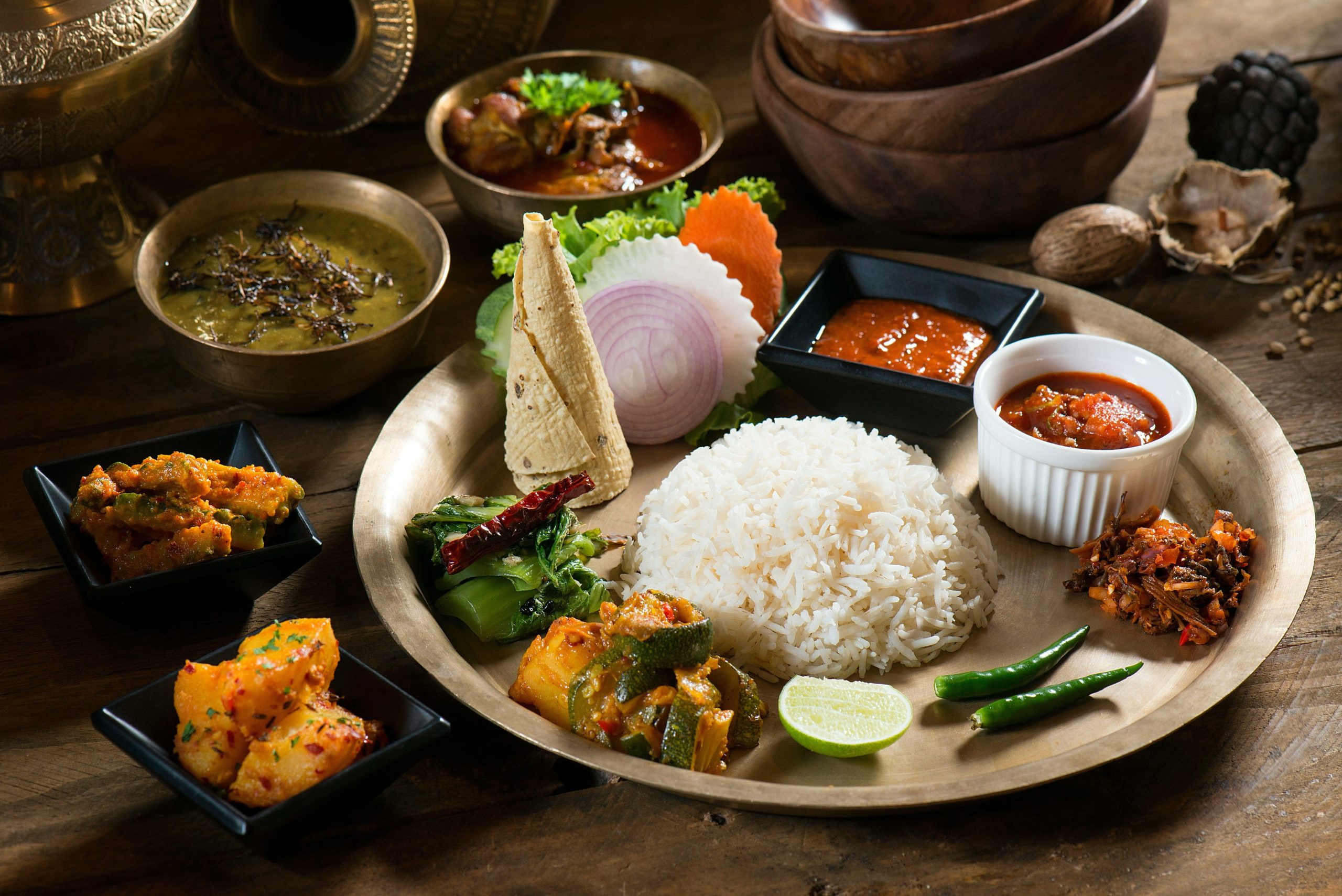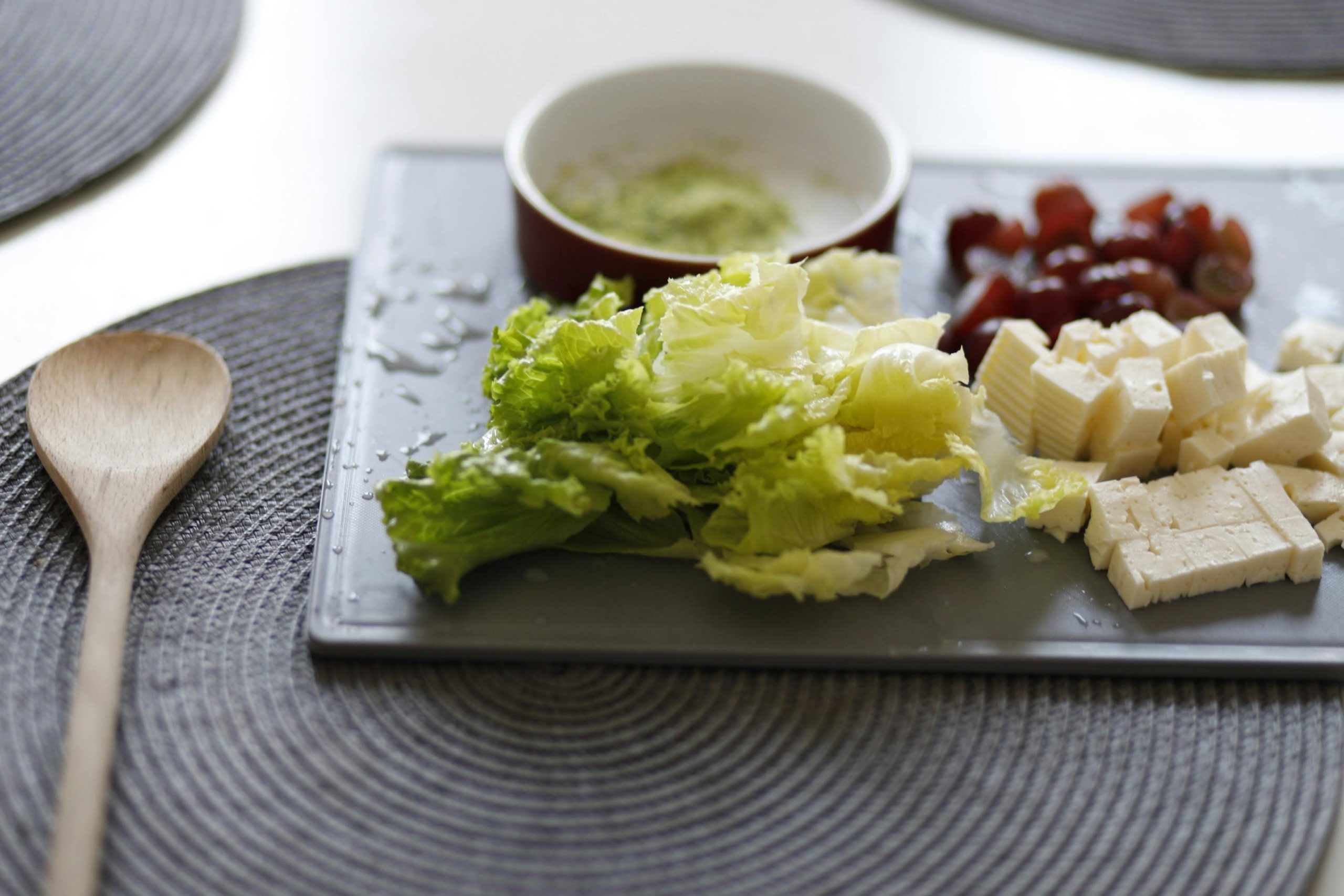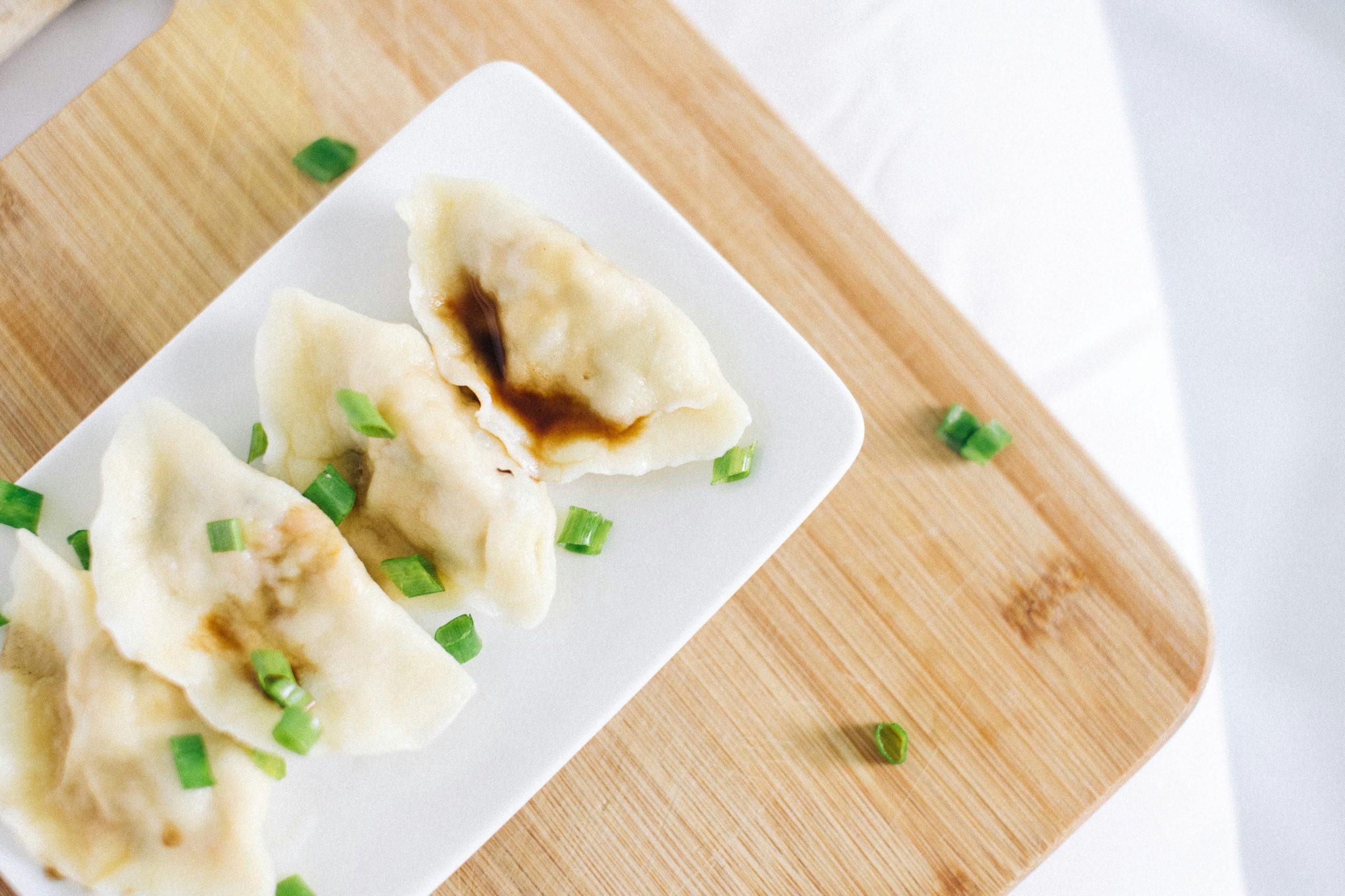Have you ever wondered how traditional Asian flavours are transformed into the sensational dishes we see today?
It’s easy to get lost in the vast array of culinary options, unsure of what truly defines modern Asian cuisine.
Modern Asian cuisine is a vibrant fusion of traditional Asian flavours with innovative cooking techniques and presentations, often incorporating ingredients and styles from around the world.
This blog will dive into the exciting world of modern Asian food, exploring innovative recipes, fusion trends, and the influence of various countries on this dynamic culinary scene.
Recipes That Define Modern Asian Cuisine

Modern Asian cuisine is an exciting culinary field where traditional flavours meet innovative techniques. This fusion creates dishes that are not only delicious but are also visually appealing and globally influenced. By blending age-old recipes with contemporary cooking methods, modern Asian cuisine offers a unique dining experience that captivates food lovers worldwide.
From using unconventional ingredients to adopting advanced cooking technologies, chefs are pushing the boundaries of what can be achieved in the kitchen. These recipes often involve a creative mix of spices, sauces, and cooking styles from various cultures, resulting in dishes that are both familiar and new.
The essence of modern Asian cuisine lies in its diversity and adaptability. Whether it’s a street food vendor experimenting with local and foreign ingredients or a high-end restaurant offering a modern twist on a classic dish, the innovative spirit of this cuisine is what truly defines it. This section will explore some of the most popular and defining recipes of modern Asian cuisine.
Innovative Menu Ideas in Modern Asian Cuisine

Innovative menu ideas in modern Asian cuisine often involve reimagining traditional dishes with a twist. Chefs are creating exciting new offerings by incorporating unconventional ingredients and cooking methods. For example, imagine a sushi roll that includes tropical fruits or a ramen bowl topped with unconventional proteins like duck or venison.
Some creative menu ideas might include:
- Deconstructed Dim Sum: where traditional fillings are served as small, tapas-like dishes with a variety of dipping sauces.
- Asian-Inspired Flatbreads: combining the soft, chewy texture of naan with bold Asian flavours such as Thai peanut or Japanese teriyaki.
- Fusion Desserts: like matcha-flavoured crème brûlée, which combines the earthy tones of green tea with a classic French dessert.
Fusion Trends in Modern Asian Cuisine

Fusion trends in modern Asian cuisine are all about blending culinary traditions to create new, exciting flavours. This can be seen in dishes that combine elements from different Asian cultures or even from completely different parts of the world. For instance, Korean tacos bring together the spicy flavours of Korean barbecue with the handheld convenience of Mexican tacos.
Other notable fusion trends include:
- Sushi Pizza: where traditional sushi elements like raw fish, wasabi, and rice are presented in the form of a small, round pizza.
- Chifa Cuisine: a fusion of Chinese and Peruvian culinary traditions, offering dishes like Arroz Chaufa (fried rice) and Lomo Saltado (stir-fried beef).
- Indo-European Creations: such as curry spiced pasta, which infuses Italian pasta dishes with the rich flavours of Indian spices.
Artistic Food Decoration in Modern Asian Cuisine

Artistic food decoration in modern Asian cuisine is not just about making dishes that are pleasing to the eye; it’s about telling a story and enhancing the dining experience. Chefs use elements like colour, texture, and composition to create visually stunning dishes. Techniques such as precise knife cuts, delicate garnishes, and thoughtful plating play a crucial role in this art form.
Current trends in food decoration include:
- Minimalist Plating: focusing on simplicity and letting the natural beauty of the ingredients shine through.
- Theme-Based Presentation: where dishes are designed around a specific concept or story, often reflecting cultural or seasonal themes.
- Innovative Use of Edible Flowers and Herbs: not only to add colour but also to introduce new flavours and textures to the dish.
Countries Influencing Modern Asian Food Trends
Modern Asian cuisine is a melting pot of traditional flavours and contemporary innovations, with several countries playing pivotal roles in its evolution. Among these, Thailand, China, and Japan stand out as significant influencers. Each of these countries brings unique elements to the table, shaping what we now recognise as modern Asian food trends.
Thai cuisine, known for its bold flavours and aromatic components, has seamlessly integrated into the modern food scene, influencing not just Asian menus but also global culinary practices. Similarly, Chinese food, with its deep historical roots and regional diversity, continues to impact modern cooking techniques and flavour profiles worldwide.
Japanese cuisine, with its emphasis on seasonality and quality ingredients, complements the modern culinary world by introducing minimalist yet impactful flavours and presentation styles. The influence of these countries is evident in the fusion dishes and innovative cooking techniques that are now staples in the modern Asian culinary landscape.
The Role of Thai Cuisine in Modern Asian Food
Thai cuisine’s influence on modern Asian food is profound, with its emphasis on fresh herbs, spices, and a balance of flavours—sweet, sour, salty, and spicy. Dishes like Tom Yum Soup and Pad Thai have become global favourites, showcasing the complexity and appeal of Thai flavours.
Moreover, Thai cooking techniques such as stir-frying and grilling have been widely adopted in modern kitchens, enhancing the culinary repertoire. The fusion of Thai flavours with other international cuisines has also become increasingly popular, leading to innovative dishes that cater to a diverse palate.
Chinese Cuisine’s Impact on Modern Asian Food

Chinese cuisine has profoundly shaped modern Asian food through its versatile ingredients and time-honoured cooking methods. The global spread of dishes like dim sum and Peking duck speaks to the universal appeal and adaptability of Chinese food traditions.
Furthermore, the principles of Chinese cooking, which emphasize harmony and balance, have influenced not only Asian cuisine but also global culinary practices. The integration of Chinese flavours and techniques has led to the creation of popular fusion dishes that blend the best of multiple culinary worlds.
Japanese Influence on Modern Asian Cuisine
Japanese cuisine contributes uniquely to modern Asian food with its meticulous preparation and presentation methods. Dishes such as sushi and ramen have transcended national boundaries to become beloved worldwide, reflecting the global influence of Japanese culinary arts.
The Japanese philosophy of respecting ingredients and their natural flavours has also permeated modern cooking, encouraging chefs worldwide to focus on quality and simplicity. This approach has led to a broader appreciation of minimalist dishes that highlight the ingredients’ true tastes and textures.
Signature Beverages in Modern Asian Cuisine
Modern Asian cuisine not only delights with its food but also with its signature beverages that blend tradition with innovation. Among the non-alcoholic favourites, bubble tea from Taiwan stands out, a sweet, tea-based drink filled with tapioca pearls. Equally innovative are the variations of coffee, such as South Korea’s dalgona coffee, a whipped, frothy concoction that gained global fame. These beverages not only complement the food but also offer a unique taste of Asian innovation.
On the alcoholic side, modern Asian drinks include a variety of craft beers and unique spirits that incorporate traditional flavours. For instance, Japan’s craft beer scene is exploding with options that range from yuzu-infused ales to wasabi-flavoured stouts, offering a bold twist on classic brews. Similarly, spirits like soju from Korea and sake from Japan have been adapted into modern cocktails, mixing with ingredients like green tea and lychee to create refreshing new drinks that resonate well with the dynamic flavours of modern Asian dishes.
Healthier Instant Noodles in Modern Asian Food
In modern Asian cuisine, the quest for healthier instant noodles has led to innovative alternatives that maintain the convenience and taste of traditional instant noodles while boosting nutritional value. Manufacturers are now using whole grain flours, such as brown rice or quinoa, which offer higher fiber content and essential nutrients compared to the typical refined wheat flour.
Additionally, the preparation methods have evolved to reduce harmful additives and excessive sodium levels commonly found in traditional instant noodle seasoning packets. Chefs and home cooks are encouraged to use natural spices and fresh ingredients to enhance flavour without compromising health. This approach not only elevates the dish’s nutritional profile but also aligns with the broader trends of healthy eating in modern Asian cuisine.
Personal Experiences with Modern Asian Food
Personal experiences with modern Asian food often revolve around the excitement of trying new flavours and dishes. For many, this includes attending cooking classes in Asia, where they learn to prepare traditional dishes with a modern twist. These classes not only teach cooking techniques but also immerse participants in the local culture, making the food even more meaningful.
Culinary tours also play a significant role in personal experiences with modern Asian cuisine. These tours often involve visiting local markets, tasting street food, and dining at renowned restaurants that showcase innovative Asian dishes. Highlights from these tours can include trying a fusion dish that blends Thai spices with European cooking styles or sampling a modern reinterpretation of a classic Japanese dessert.
Key Events in the Modern Asian Food Scene
The modern Asian food scene is vibrant and constantly evolving, marked by numerous significant events that celebrate its diversity and innovation. Food festivals, in particular, play a crucial role in this landscape, offering a platform for showcasing both traditional and contemporary Asian culinary practices. These festivals not only highlight regional cuisines but also foster a deeper understanding and appreciation among locals and tourists alike.
Among these events, certain food festivals have gained international fame, drawing visitors from all over the world. These include the Singapore Food Festival, which celebrates the rich tapestry of Singapore’s cuisine, and the Sapporo Snow Festival in Japan, known for its ice sculptures and exquisite local dishes. Each festival serves as a culinary showcase where:
- Traditional recipes are revitalized with modern twists
- New culinary talents are discovered
- Cultural exchange and culinary innovation are encouraged
Discover Modern Asian Food with Indulge Tours
INDULGE offers an exceptional opportunity to dive into the world of modern Asian cuisine through their curated culinary tours and exclusive dining experiences in Zurich. These tours are designed to enhance your understanding and enjoyment of Asian culinary arts, led by experienced local experts who bring each dish’s story to life. From tasting sessions that explore the subtleties of Asian spices to dining experiences that showcase innovative fusion dishes, INDULGE ensures a comprehensive gastronomic adventure.
By participating in an INDULGE tour, you not only get to savour exquisite dishes but also gain insights into the preparation and cultural significance behind them. Highlights of these tours include:
- Introduction to famous Swiss specialties with an Asian twist
- Exclusive access to Wine & Dine experiences in Zurich’s vibrant culinary spots
For anyone eager to explore the rich flavours and innovative presentations of modern Asian cuisine, booking a tour with INDULGE is a must. Visit INDULGE’s website to reserve your culinary adventure today.
Frequently Asked Questions
What is modern Asian food?
Modern Asian cuisine is a vibrant fusion of traditional Asian flavours with innovative cooking techniques and presentations, often incorporating ingredients and styles from around the world. It involves blending age-old recipes with contemporary cooking methods to create dishes that are delicious, visually appealing, and globally influenced. This cuisine is defined by its diversity, adaptability, and the innovative spirit that allows for the experimentation and integration of various cultural elements.








